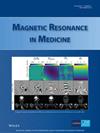Referenceless 4D flow MRI using radial balanced SSFP at 0.6 T
Abstract
Purpose
To implement four-dimensional-flow MRI using phase-contrast balanced steady-state free precession (bSSFP) at 0.6 T using a free-running three-dimensional (3D) radial trajectory and referenceless background phase correction.
Methods
A free-running, wobbling Archimedean spiral approach including bipolar velocity-encoding gradients (3D PC-bSSFP) was implemented on a 0.6T prototype scanner. Bipolar rewinder gradients were added to ensure first-moment nulling per repetition time. Velocity encoding was performed using a three-point encoding scheme (i.e., omitting a reference measurement). Advanced computer simulations were carried out to validate the approach. Image reconstruction was performed using a locally low-rank approach. Results for anatomical visualization and flow quantification were reconstructed separately with different regularization factors. Background phase correction was achieved using phase estimation on time-averaged reconstructions. In vivo data were acquired in 6 healthy subjects during free breathing. Additional two-dimensional (2D) phase-contrast spoiled gradient-echo (2D PC-GRE) breath-hold data were obtained for reference to compare flow values in the ascending aorta, descending aorta, and pulmonary trunk.
Results
Velocity data acquired with 3D PC-bSSFP compared well with 2D PC-GRE (root mean square error = 3.96 cm/s), with minor underestimation of velocities (−0.52 cm/s). Cardiac phase-dependent signal-to-noise ratios normalized for differences in scan time and resolution between 3D PC-bSSFP and 2D PC-GRE demonstrate relatively steady values for 3D PC-bSSFP when compared to 2D PC-bSSFP with some reduction during phases of high flow.
Conclusion
Free-running, referenceless, four-dimensional-flow MRI using radial 3D PC-bSSFP is feasible on a lower-field 0.6T system, producing adequate flow quantification while yielding simultaneously reasonable cine images for concurrent flow and functional assessment of the heart and great vessels.

 求助内容:
求助内容: 应助结果提醒方式:
应助结果提醒方式:


